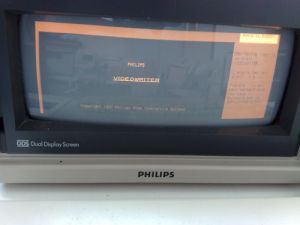CRT:Audiotronics 900960: Difference between revisions
(Wow!) |
m (Text replacement - "\|service_bulletins \= \n" to "") |
||
| Line 14: | Line 14: | ||
|chassis = | |chassis = | ||
|service_manual = | |service_manual = | ||
|brochure = [[Media:Computer Design 1984-8 p251.pdf]], [[Media:MiniMicroSystems 1985-4 Video.pdf]] | |brochure = [[Media:Computer Design 1984-8 p251.pdf]], [[Media:MiniMicroSystems 1985-4 Video.pdf]] | ||
}} | }} | ||
Revision as of 04:24, 1 November 2023
| Information | |
|---|---|
| Manufacturer | Audiotronics |
| Type | Industrial/Computer |
| Size | 10.28" |
| TV Lines | 700 |
| 240p/480i | Yes |
| 480p | No |
| Widescreen | Yes |
| Component | 1x Y/H/V |
| Links | |
| Brochure | Media:Computer Design 1984-8 p251.pdf, Media:MiniMicroSystems 1985-4 Video.pdf |
The Audiotronics 900960 (confusingly "marketed" as 9DD960 despite the former name being used on the final product) is a frameless black-and-amber CRT monitor for embedded and industrial applications. Horizontal frequency ranges between 15 and 22 kHz.
With its 1.8 (16.2:9) aspect ratio, the Clinton Electronics-manufactured tube is likely the first ultrawide CRT to be made (predating any major development in widescreen TV) and possibly the only one to enter production.
It also managed some degree of mass-market sales, thanks to a variant (900960-03) being used in the Philips VideoWriter 250 digital typewriter/dedicated word processor[1], and of a derivative in the 4?60 series.[2] In this application, Philips marketed it as Dual Display Screen simply because of the two-pane VideoWriter interface.
